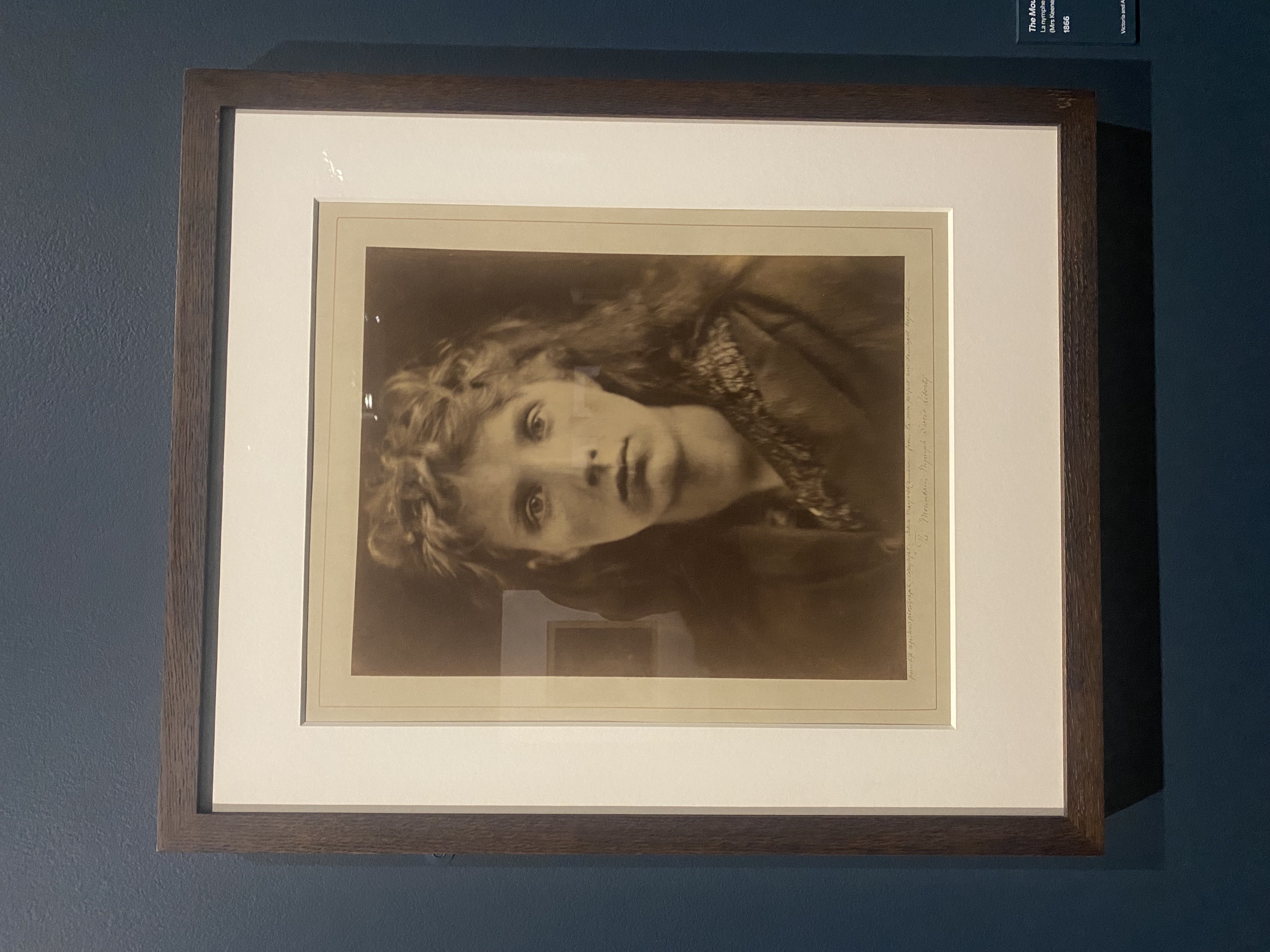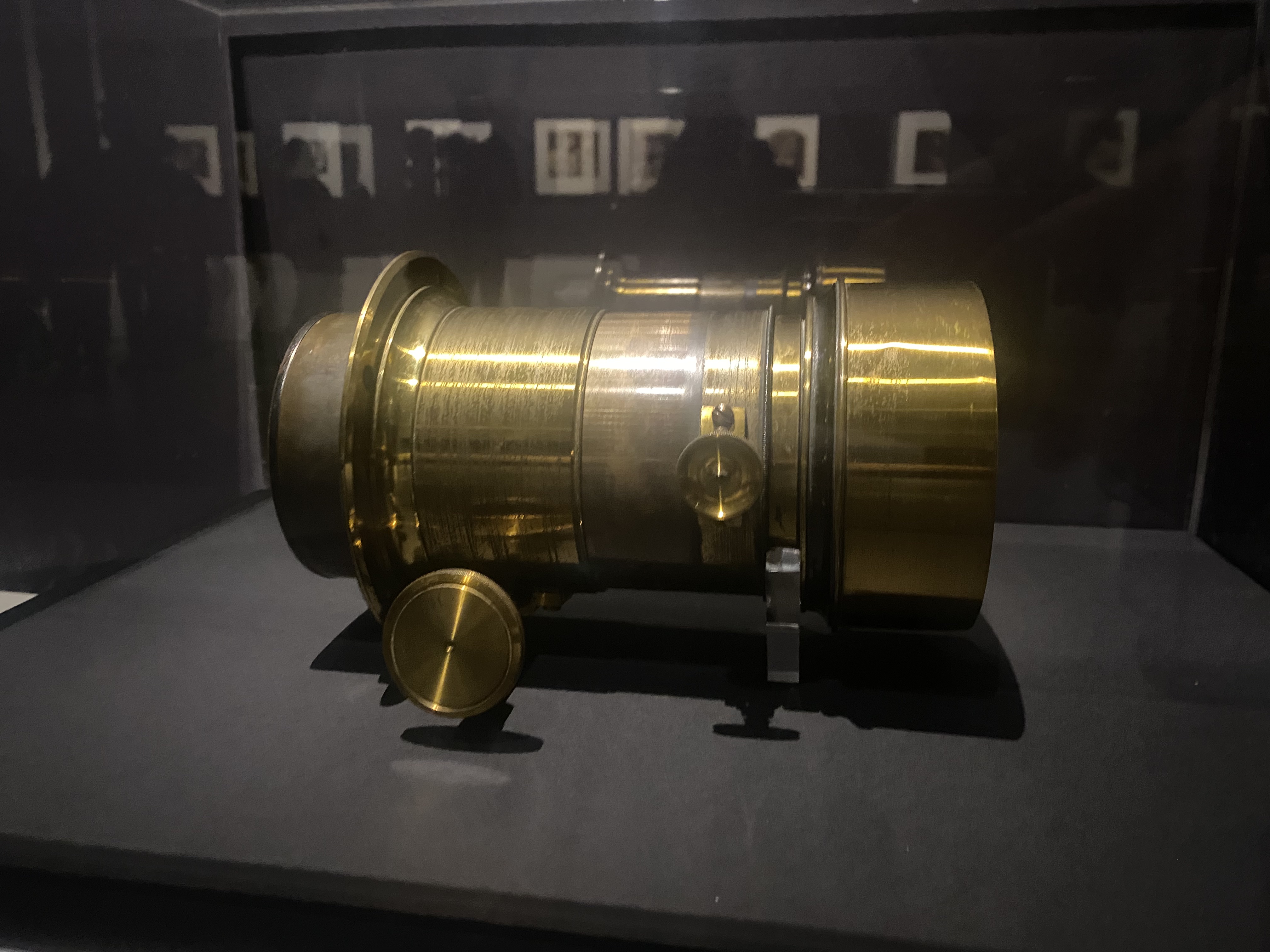The Photo Portrait: Then and Now

Julia Margaret Cameron (1815-1879) is perhaps one of the greatest photographers of the Victorian period. The sitters of her romantic portraits were often friends and family members, but also famous figures of her time, such as feminist writer Virginia Woolf, Scottish philosopher and essayist Thomas Carlyle, and Alice Liddell, who was Lewis Caroll’s real-life inspiration for the children’s book Alice in Wonderland. Her portraits make use of photographic techniques such as soft focus (having unsharp or blurry outlines) and natural light to enhance the natural beauty of her subjects, often female models from her close circle — emphasizing the intimate nature of her photographs.

Image credit: Zara Abubakar
The Jeu de Paume, one of Paris’s most well-known museums that is dedicated to promoting photography and moving images (video art, cinema, etc.), recently hosted a retrospective of Cameron’s work, closing at the end of January. On the white walls leading up to the exhibition space, were quotes by those inspired and influenced by the work of Cameron. One quote, made by the Financial Times in 2015, dubs Cameron "A Cindy Sherman of Victorian fantasy." Upon entering the exhibition space, I was met with dozens upon dozens of black & white and sepia-toned portraits of sitters of both sexes, and all ages, from children to elderly.
To understand the legacy of Cameron’s portraiture, one must become acquainted with the history of portrait photography. Portrait photography, according to Blind magazine, is by definition, "a genre of photography that primarily aims to capture the character, the personality, the identity of a person or group of persons." After the creation of the "daguerreotype," an early photo-chemical method developed by Louis Daguerre and Nicéphore Niépce in 1839, other photographic methods soon took over, and portrait photography changed due to new technological innovations in photo-chemistry. From the glamorous black & white portraits of 1930s Hollywood by George Hurrell, to the vivid portraits of high society by Madame Yevonde, to the contemporary portraits by Annie Leibovitz; portrait photography has always reflected the times along with the people they capture.
The photos of Julia Margaret Cameron generally evoke a kind of Victorian romanticism. The sepia toned color, the subtle restriction in her sitter's poses and posture, and the expressions often showing some kind of arresting emotion instills a sense of mystique from a bygone era in the onlooker when looking at any of her photographs. As was the fashion in her time, many of Cameron's sitters are photographed from their side so only the profile is showing. However, many of the photos at the Jeu de Paume exhibition feature the sitter looking directly at the camera. One portrait of Alice Liddell (St. Agnes - Alice Liddell, 1872) has the sitter dressed up as the Christian saint, crowned and holding a martyr's palm and looking directly at the viewer. Another portrait (The Astronomer, 1867), of English polymath John Herschel, is incredibly striking and one of my favorite works from the exhibition. The portrait of Herschel features him looking up in contemplation, and the motion blur in the pictures mirrors blurry, long-exposure photographs of starry night skies in motion. Another piece (Despair, 1868-72) has a long and loose-haired woman staring wistfully past the camera, holding lilies.
My favorite part of the exhibition, by far, was a camera lens used by Julia Margaret Cameron herself. According to the accompanying exhibition text, it is "the only surviving piece of Cameron’s equipment" — a bittersweet fact — coming from the collection of the Victoria & Albert Museum in London. As a photographer myself, I was happy that such a precious and personal piece of Cameron’s equipment survived, even if it was the only one; I came across this piece as I was walking out of the exhibition, and suddenly all the subjects in the portraits appeared to come to life.

The only surviving piece of Julia Margaret Cameron's equipment, one of her lenses. Image credit: Zara Abubakar
Today, portrait photography is a constantly evolving genre, evolving even faster in our tech-centered world, particularly in the dawn of artificial intelligence. Faced with all these quickly changing technological advances, what has made the photographic portrait endure for so long and not fall out of fashion? Multimedia artist and Parsons Paris student Demir Ramazanov speculates: "The photographic portrait endures due to its ability to capture human essence and connections, document history and identity, preserve moments, serve as artistic expression, adapt to technology, and facilitate social interaction in a concise yet profound manner." He argues in terms of the evolution of the photographic portrait, "Now, portraits exist in both digital and physical spaces, blending and merging with artificiality within the frontiers of what is real and what is not."





